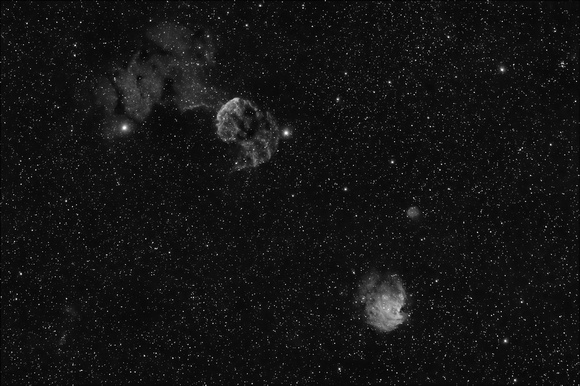Canon 350D Hap Griffin Baader Mod20x600sec at iso 1600
30 Darks/Flats/Bias
Canon 70-200 f/2.8 L at 200mm
Baader 2 inch 7nm H alpha filter
Step Down Rings
Taken during a near full waxing gibbous moon
IC443 (top) - sometimes called the "Jellyfish Nebula" - is a supernova remnant in Gemini that turned out to be extremely difficult to image in Ha with a DSLR - there just wasn't much signal. Part of the reason is perhaps that the cloud has large amounts of oxygen and other heavier elements from the supernova. The remnant is the claw shaped object and the trailing nebulosity towards the top left corner is from emission nebulae S249 and DG101.
The supernova explosion is thought to have occured about 30,000 years ago and it leaves a rapidly rotating
neutron star which emits large amounts of X-rays. Distance 5000 light years.
NGC 2174/2175 is the lower bright object in the field, and is composed of an intense emission nebula (NGC 2174) surrounding a cluster of young stars (NGC 2175) at a distance of 6400 light years. NGC 2174 is sometimes called the "Monkeyhead Nebula" as it strongly resembles a monkey's head when viewed with it's south side up (inverse of the image here).
NGC 2174 is apparently a much more intense emitter of Ha light than IC443.
The small lump of nebulosity above NGC 2174/2175 is 15th magnitude S247.
October 11, 2008


